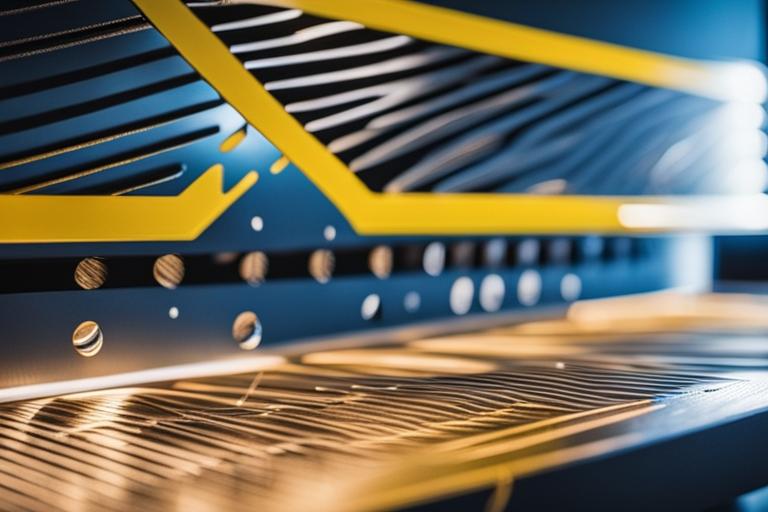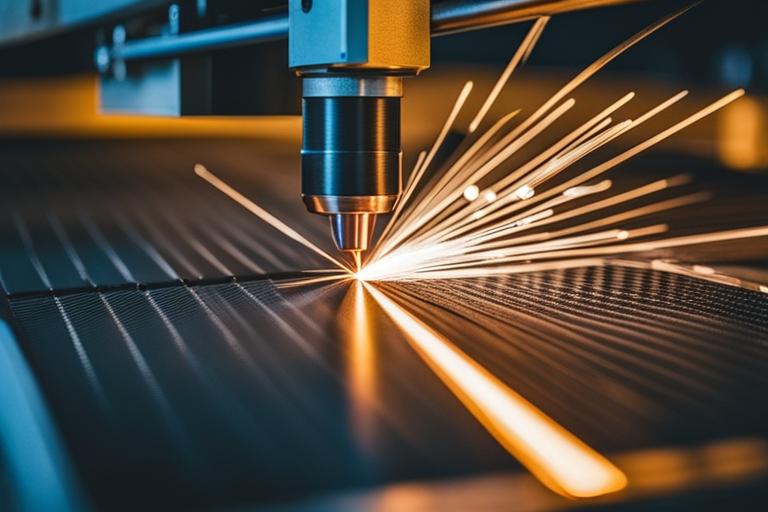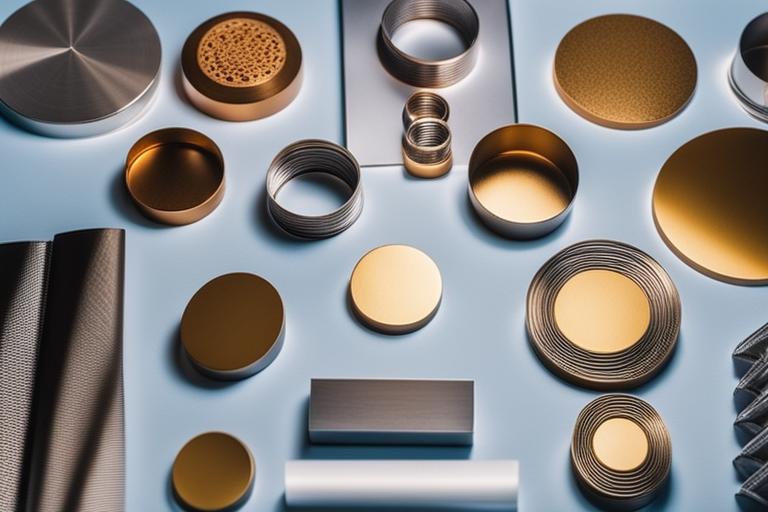Laser cutting, a pivotal technology in modern manufacturing, has revolutionized the precision sheet metal fabrication industry. It offers unparalleled accuracy and efficiency in the cutting process, making it a crucial component of modern manufacturing. In this comprehensive guide, we will delve into the intricacies of laser cutting, its processes, materials, applications, and future trends, shedding light on its pivotal role in transforming sheet metal fabrication.
What You’ll Learn About Laser Cutting in Precision Sheet Metal Fabrication
By reading this article, you will learn:
– The definition and importance of laser cutting in precision sheet metal fabrication
– The process, materials, and advantages of laser cutting technology
– The industrial applications and future trends of laser cutting

Understanding the Laser Cutting Process
Definition of Laser Cutting
Laser cutting, a thermal-based material removal process, utilizes a high-powered laser beam to precisely cut through various materials, allowing for intricate cuts and shapes.
Importance of Laser Cutting in Precision Sheet Metal Fabrication
Laser cutting plays a pivotal role in achieving precise and intricate components with remarkable accuracy in precision sheet metal fabrication.

Advantages of Laser Cutting Technology
Laser cutting technology offers several advantages, including high precision, minimal material waste, and the capability to cut a wide range of materials, making it a preferred method in the sheet metal fabrication industry.
Overview of the Laser Cutting Process
The laser cutting process involves focusing a high-powered laser beam onto the material’s surface, resulting in a clean, precise cut with minimal heat-affected zones.
Role of High-Powered Lasers in Cutting
High-powered lasers, such as CO2 and fiber lasers, efficiently deliver intense energy to the material, allowing for precise cutting.
Comparison of CO2 and Fiber Laser Cutting Techniques
CO2 lasers are well-suited for cutting thicker materials, while fiber lasers excel in cutting thin metals and offer higher cutting speeds.

Materials and Applications
Suitable Materials for Laser Cutting
Laser cutting is suitable for metals, plastics, wood, and glass, making it an attractive choice for various industries.
Effective Cutting of Metals such as Stainless Steel, Aluminum, and Alloys
In precision sheet metal fabrication, laser cutting is particularly effective for metals such as stainless steel, aluminum, and various alloys.
Thickness Considerations for Different Materials
The thickness of the material being cut is an important consideration in laser cutting, as thin materials can be cut with high precision and speed, while thicker materials may require more power and specialized techniques.
Precision and Accuracy

Achieving Precision and Accuracy in Laser Cutting
Laser cutting technology is renowned for its exceptional precision and accuracy, crucial in industries where intricate designs and tight tolerances are required.
Capability for Intricate Designs and Tight Tolerances
The ability of laser cutting to produce intricate designs and maintain tight tolerances is unmatched by traditional cutting methods, making it invaluable in industries where component accuracy is critical.
Ensuring Consistent Quality in Precision Sheet Metal Fabrication
The consistency and quality of laser-cut components contribute to the overall excellence of precision sheet metal fabrication, reducing the need for rework and ensuring customer satisfaction.
Advantages of Laser Cutting
| Pros | Cons |
|---|---|
| Reduction of Material Waste | High Initial Equipment Costs |
| Improved Production Times | Limited Thickness for Cutting |
| Minimization of Post-Processing Needs | Sensitivity to Material Variations |
| Pros | Cons |
|---|---|
| Reduction of Material Waste | High Initial Equipment Costs |
| Improved Production Times | Limited Thickness for Cutting |
| Minimization of Post-Processing Needs | Sensitivity to Material Variations |

Industrial Applications
Examples of Laser Cutting in Precision Sheet Metal Fabrication
Laser cutting finds extensive use in precision sheet metal fabrication for producing components such as enclosures, brackets, and intricate structural elements.
Utilization in Electronics, Automotive, and Architectural Industries
The applications of laser cutting extend to diverse industries, including electronics, automotive, and architecture, where it plays a crucial role in manufacturing high-quality parts.
Implementing Laser Cutting
Factors to Consider for Integrating Laser Cutting
When integrating laser cutting into manufacturing processes, factors such as material type, thickness, and desired precision must be carefully considered to optimize the benefits of this technology.
Equipment Selection and Considerations
Selecting the appropriate laser cutting equipment is essential for achieving desired cutting results, considering factors such as laser power, cutting speed, and assist gas selection.
Training and Safety Measures for Operators
Proper training and adherence to safety protocols are imperative for operators working with laser cutting equipment, ensuring operational efficiency and minimizing the risk of workplace accidents.
Future Trends and Innovations
Emerging Technologies in Laser Cutting
The field of laser cutting continues to evolve with the emergence of advanced technologies such as ultrafast lasers, hybrid laser systems, and enhanced automation, offering new possibilities for precision sheet metal fabrication.
The Impact of Advancements on Precision Sheet Metal Fabrication
Advancements in laser cutting technologies are poised to revolutionize precision sheet metal fabrication, enabling even greater levels of precision, efficiency, and versatility in manufacturing processes.
Incorporating case studies or real-life examples, providing specific data or statistics, and including information about potential safety risks or considerations in using laser cutting technology can enhance the credibility and practical insights provided in this guide.
By addressing these suggestions, the article will provide a more comprehensive understanding of laser cutting and its applications in precision sheet metal fabrication.
Questions & Answers
Who uses laser cutting in precision sheet metal fabrication?
Precision sheet metal fabricators use laser cutting to precisely cut and shape metal sheets for various products.
What makes laser cutting a preferred method in sheet metal fabrication?
Laser cutting provides high precision, minimal material waste, and the ability to cut complex shapes efficiently.
How does laser cutting contribute to efficient production in sheet metal fabrication?
Laser cutting allows for quick setup, high cutting speeds, and automation, resulting in efficient production processes.
Isn’t laser cutting in sheet metal fabrication costly?
While the initial investment in laser cutting equipment may be higher, its efficiency and precision can lead to cost savings in the long run.
What materials can be effectively cut using laser cutting in sheet metal fabrication?
Laser cutting is effective for cutting various materials, including stainless steel, aluminum, copper, and other metal alloys.
How do precision sheet metal fabricators ensure the quality of laser-cut parts?
Fabricators use advanced software for design, precise machine calibration, and quality control measures to ensure the accuracy of laser-cut parts.
